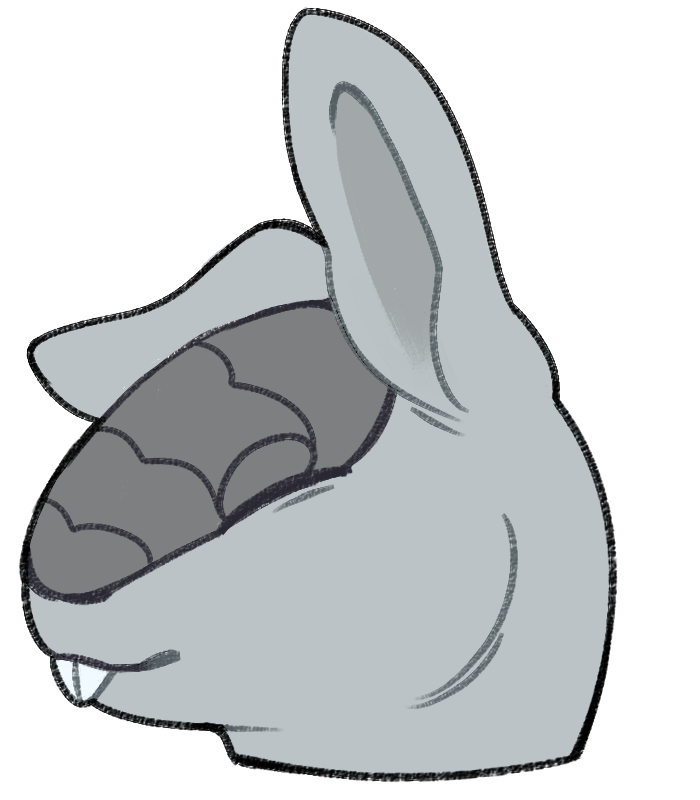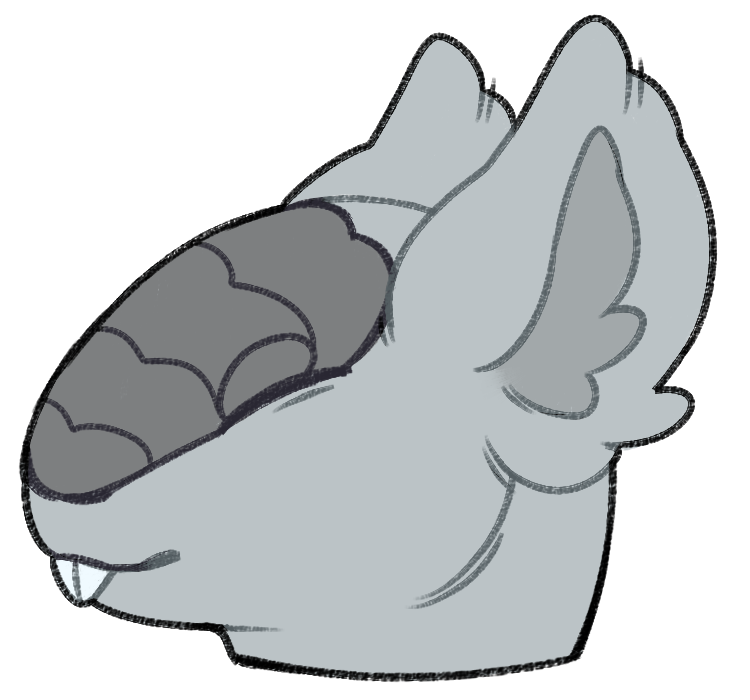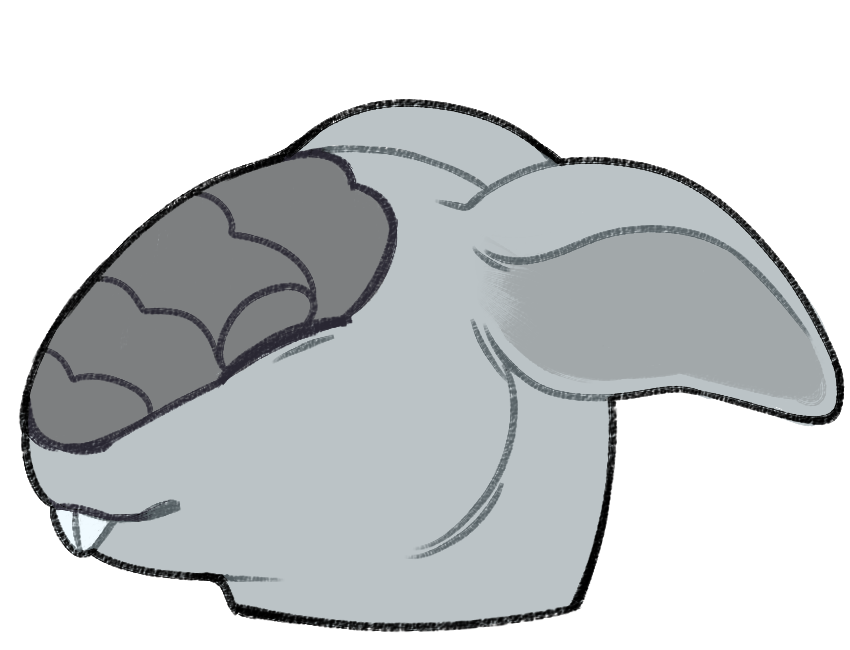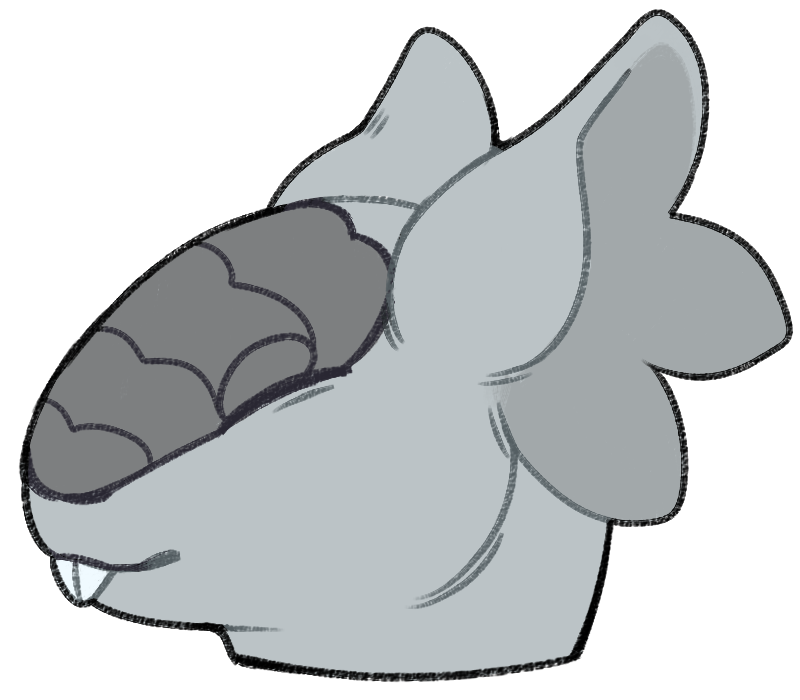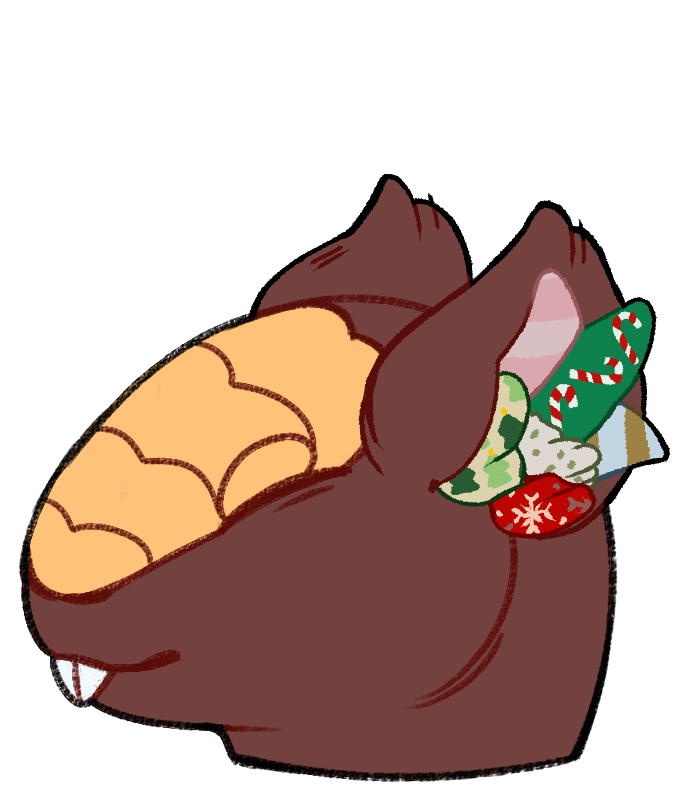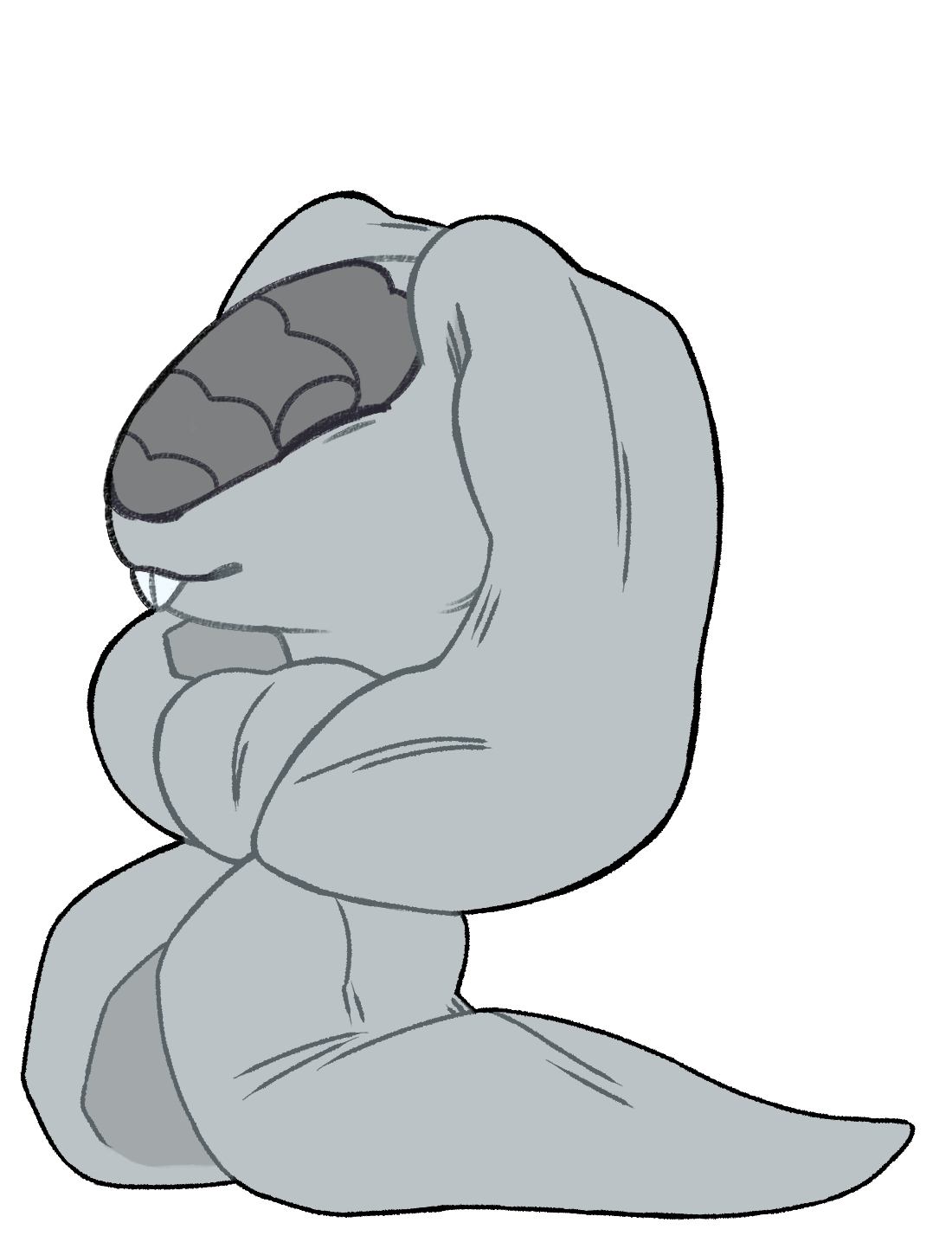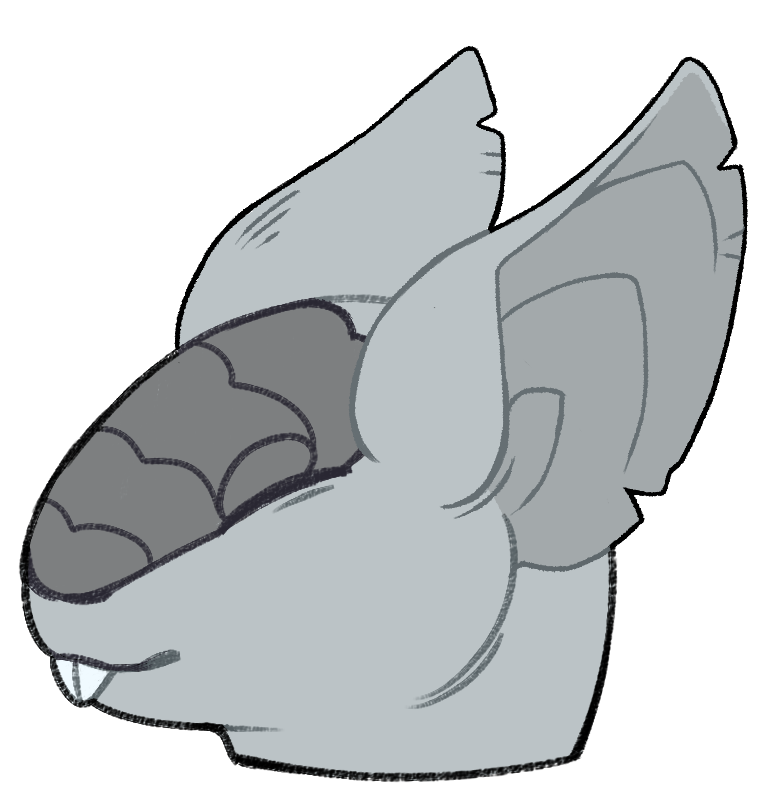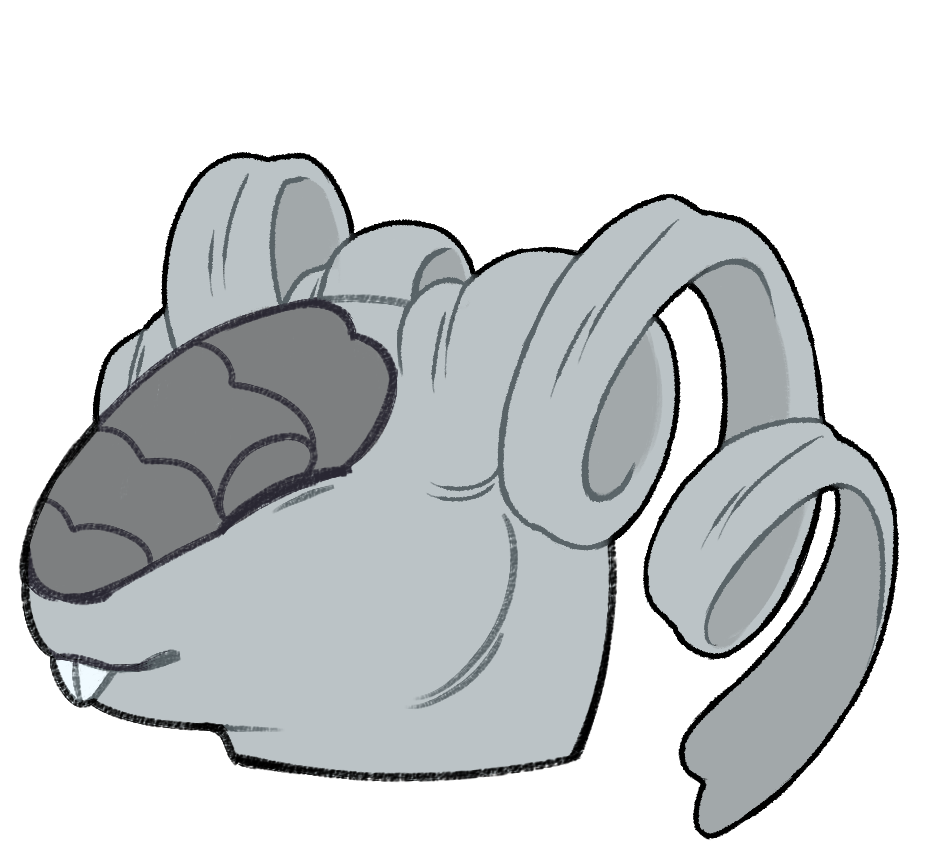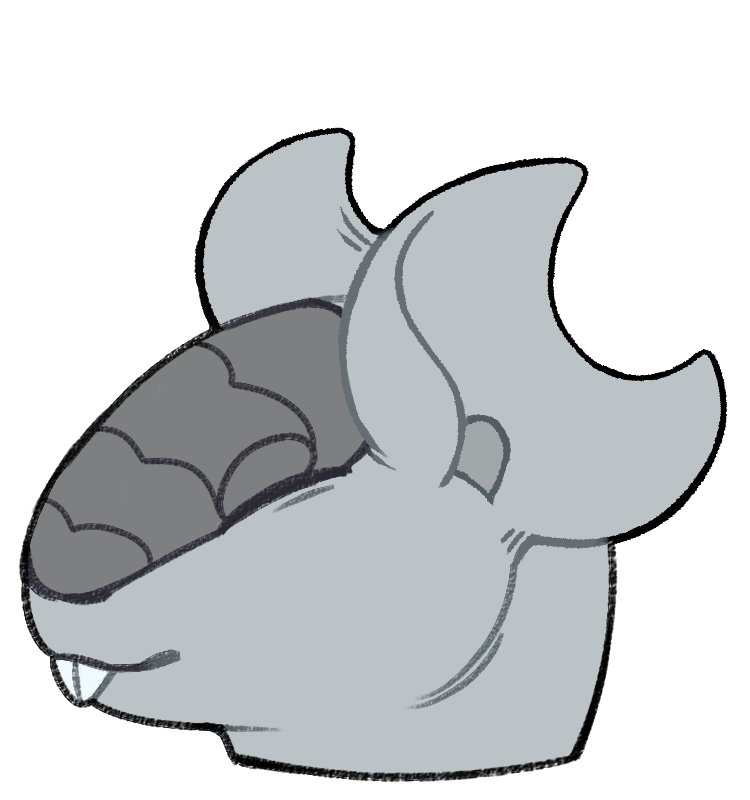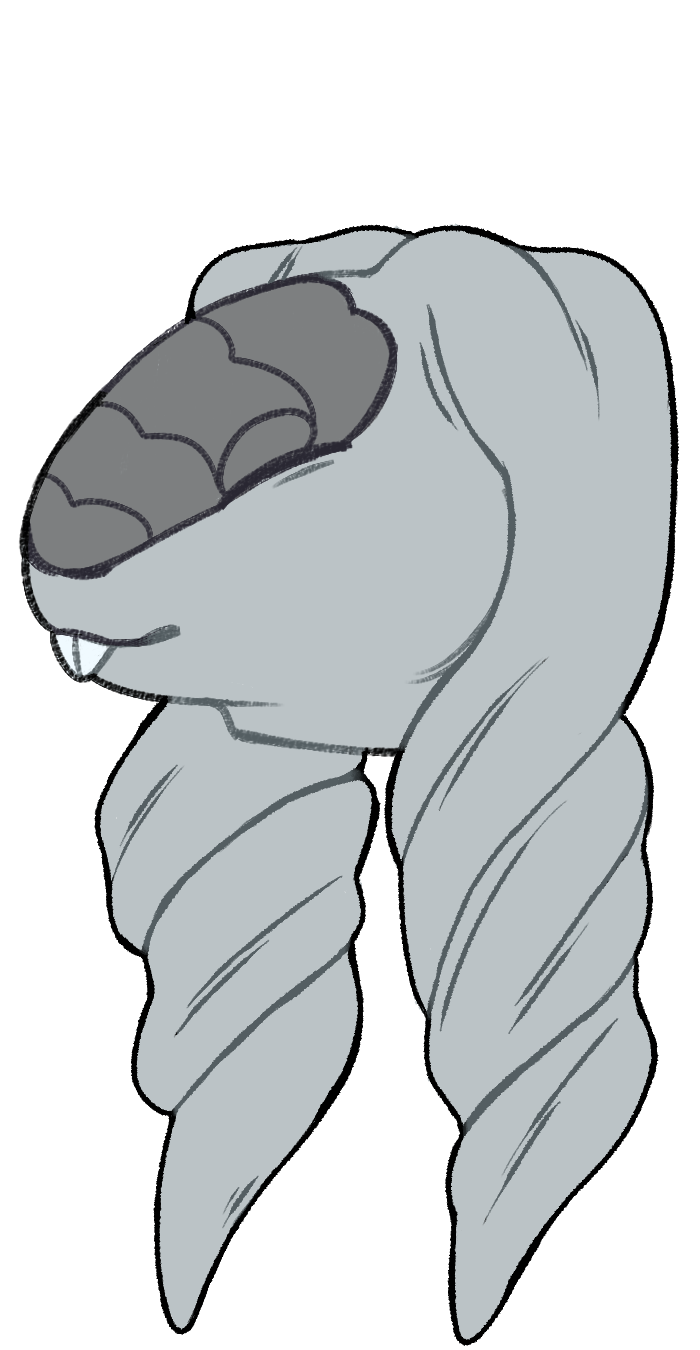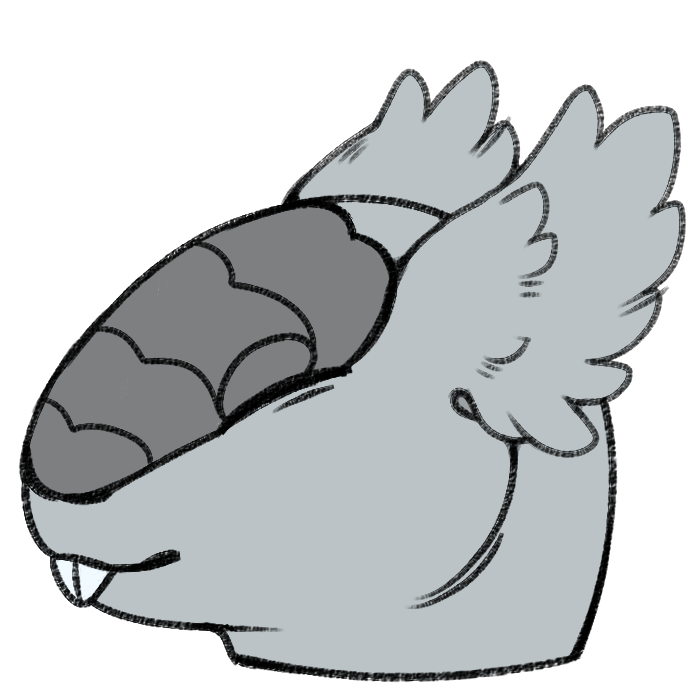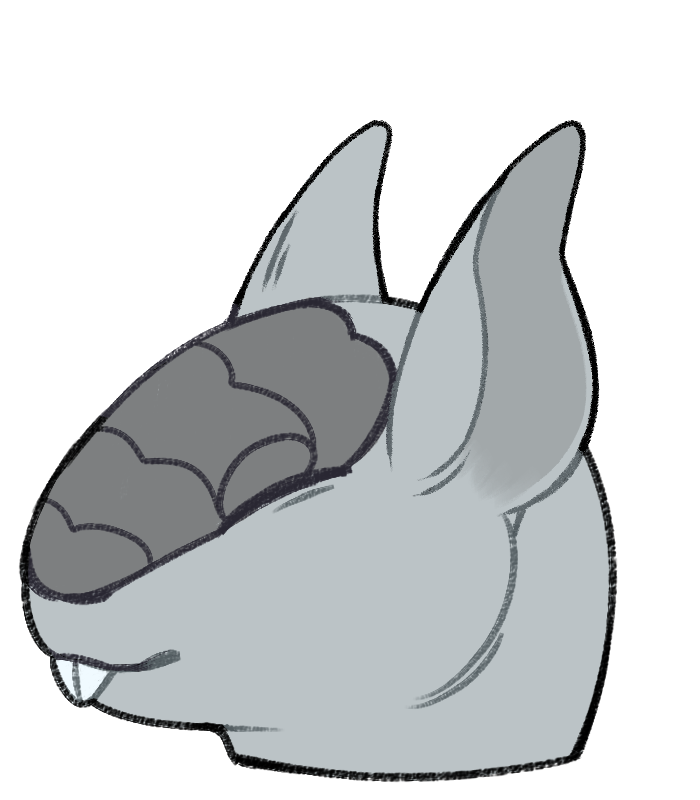Traits
Rabbit Ears (Standard)
These ears can either fold or flop downward. Both lop and upright ears would fall under this trait. This is the most common style of ears.
Vuline Ears (Standard)
These ears should either fold over, have inner ear fur, or be able to swivel and pin back away from the face.
Livestock Ears (Mutation)
These ears range from short to long and tend to either stand upright and swivel away from a vabbits' vents or will flop over to protect the inner ear when steam is released. They tend to have less protective fur and resemble the ears of horses, cows, and mules.
Spiked Ears (Mutation)
These ears seem to have large, outward spikes and can have either very little fur or be fully covered. When using their vents, vabbits with this ear type will pin them back to protect the inner ear from the heat given off by steam.
Wrapping Paper Ears (Winter)
This ear trait gives vabbits a unique type of ear that forms layers of a thick paper-like material that behaves similarly to the protective fluff sometimes seen in their ears. Each layer of this wrapping paper-like material has unique patterns and when it comes into contact with heat it will protect the ear while slowly wearing down and crinkling toward the base of the ear to reveal the next layer.
Droopy Ears (Mythic)
This ear type is extremely long and droopy, often being as long as the vabbit is tall, and may even drag on the ground. Vabbits with this trait tend to tie up or braid their ears to keep them out of the way and protect the sensitive inner ear from their own steam.
Batty Ears (Standard)
Vabbits with this ear type tend to have large, pointed ears that resemble those seen on bats. These ears tend to have some type of ridges present on the inside of the ear.
Ribbon Ears (Mutation)
These long springy ears can form in lose or tight coils that the vabbit can control at will and when using their steam they will often coil them into tight cones to protect the sensitive inner flesh of the ear.
Shaped Ears (Mutation)
This ear type allows a vabbit to have a variety of simply shaped ears (heart, star, music note, fish, etc.), these ears can be either upright or flop downward and vary from one vabbit to another.
Spiral Ears (Mutation)
This unique ear type gives vabbits long, curling ears that can form into either soft or tight spirals that resemble sea shells.
Hooty Ears (Mutation)
These short, feather-covered ears have a completely covered inner ear and can emote in small ways from folding down to standing upright and rotating as the mhoat wishes. They tend to resemble the tufts seen on owls and other birds.
Dobie Ears (Mutation)
Vabbits with this trait form slender upright ears that resemble the cropped ears seen on dogs such as dobermann. When releasing steam, the edges of these ears actually curl inward to protect the sensitive inner skin of a vabbit's ear.
Pretzel Ears (Mutation)
Vabbits with this ear type form ears that can resemble a variety of pretzels be they classic, knots, braids, and so on. These ears tend to have very little of the inner ear showing, usually only forming as small holes in spaces where the pretzel overlaps itself to form the shape, to the point that multiple small openings can form to display the inner flesh color. Additionally, these ears form little salt-like deposits resembling the salt often found on pretzels.
Mouse Ears (Standard)
This trait gives vabbits large round ears that resembles those seen on mice.
